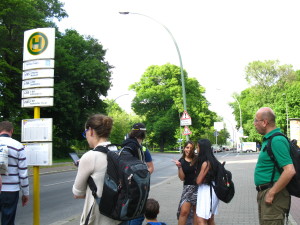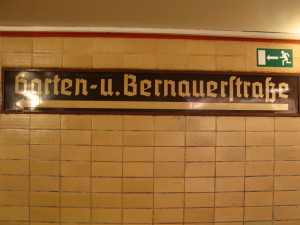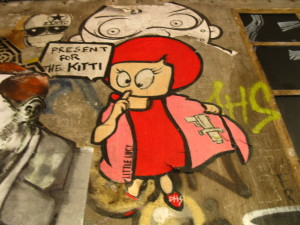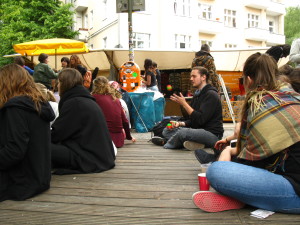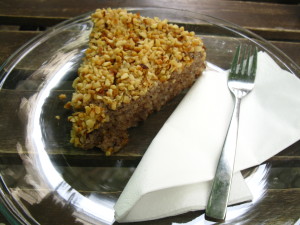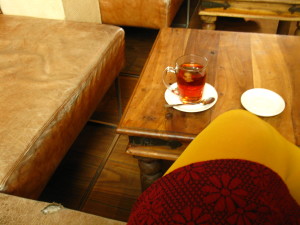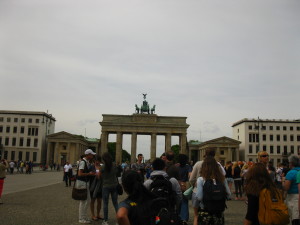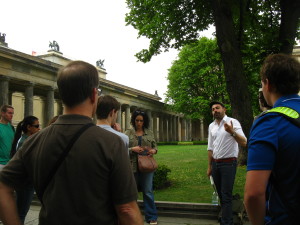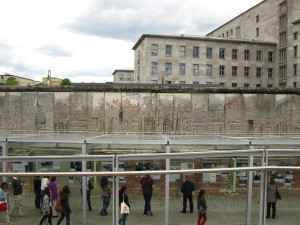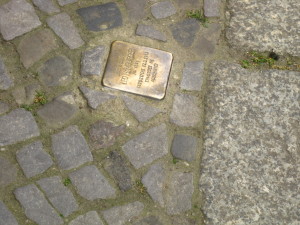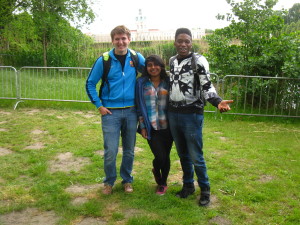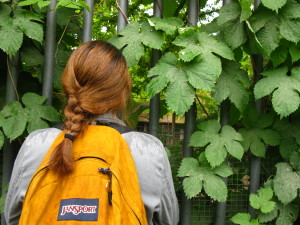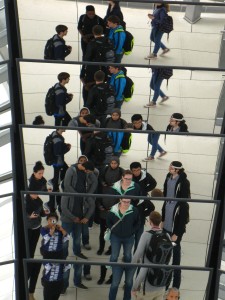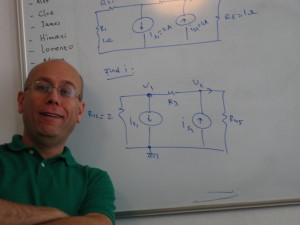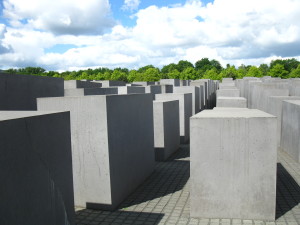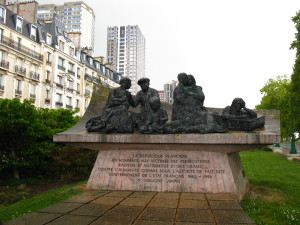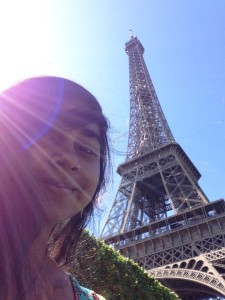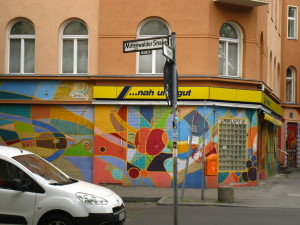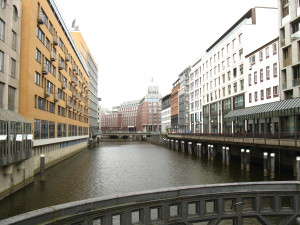I liked to hop on the U-Bahn and just ride around the city, hopping off whenever I got curious. I had gone up to Bernauer Strasse where the Berlin Wall Memorial marked one of the most common crossing points for those attempting to escape to the West, had ridden around on the Ring Bahn, watching the city flash by the train windows, had gone to Prinzessinengarten, a community garden with little stalls and make-shift seating arrangements for an afternoon of reading or conversing with friends. The train stations were numerous; regardless of where one was in the city, a train station or bus location could be found. The train stations themselves could be interesting. The script on the signage often gave a clue to when the station had been set up or most heavily used.
Wandering Berlin, living in Berlin, immersing myself in Berlin. That was the true reason for and the true wonder of studying abroad. Living in Berlin with just a handful of fellow students affords the particular opportunity of immersing oneself in an utterly unknown environment with the safety net of other students with just as little familiarity with the locale. The lack of familiarity was the most exciting factor, though.
Berlin is a fascinating city. Large but lacking the glossy veneer of places like London or Paris or New York, Berlin is raw and graffiti-covered and beautiful. A turbulent not-so-distant past, a thriving arts scene, a heavy Turkish influence (kebaps are their fast food – A+). One of the most interesting afternoons I spent was at the Turkish Market on Maybachufer in Neukolln, a double corridor of stalls selling everything from bolts of fabric to fresh produce to odds and ends from goodness knows where. Another afternoon was spent on a walking tour of the street art in Berlin.
In my time there, I developed rather a penchant for good cafes. Coffee culture is thriving in Berlin. Five Elephant, tucked away a block from Gorlitzer Park, a slightly unlikely location, had one of the best cappuccinos I have ever had and some hazelnut cake so good the sparrows were trying to nab it. Cuccuma, just two blocks from our residence in Mittenwalder Strasse, became a sort of local haunt; the warm-toned, hazy atmosphere, good coffee, and free wifi made it the perfect place to get some homework done, grab some breakfast, or just read.
By the end of the month, Berlin had started to feel more comfortable, just a little bit more familiar than when I had set foot off a connecting flight from Zurich. I won’t hit you with the cliché, but don’t for a minute underestimate how much being in an entirely new environment can affect you. For me…well, let’s say I would jump at an opportunity to live in Berlin again.


